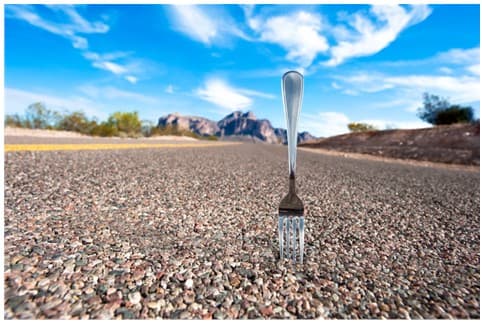Find the Right Credit Card Relief Plan

Get rid of your debt faster with debt relief
Choose your debt amount
Or speak to a debt consultant 844-731-0836
- 5 min read
- Put in place a do-it-yourself credit card relief plan, if you can.
- Consolidate debt using your home equity, if you are eligible.
- Look into debt settlement or bankruptcy, if your debt problems are serious.
- Start your FREE debt assessment
Choose the Credit Card Relief Plan That's Right for Your Situation
The first step to solving a credit card debt problem is to recognize that the problem exists. It is hard to ignore the existence of a problem if you are receiving late notices, collection letters, or threatening phone calls. It is easier to pretend that you don't have a problem, if you are making all of your payments on time, even if a closer examination shows that your financial picture is getting worse and worse each month. Once you acknowledge that you have a debt problem, you reach a key fork in the road. You realize that you need to put a credit card relief plan in place, but you are not sure which path to take. Before you start down any particular path, take some time to evaluate your overall financial picture. Think about:
- What behavior got you into your debt problem?
- What assets and money you can afford to use?
- Are small steps or drastic action necessary?
Your answers to the questions above will help you figure out the best credit card relief plan for your individual situation.
Quick Tip
If you're struggling with debt, receive a free, no-hassle debt relief quote from one of Bills.com’s pre-screened debt relief providers.
Small Problems: The Easy Road
If what got you into credit card debt was poor money management or overspending, the first step in your credit card relief plan is to live within your means. Take control of your life and stop using your credit cards. You can't work your way out of debt, if you keep accumulating more debt.
- Budget- Make a budget, so you get a clear picture of your monthly income and your fixed monthly costs. Account for your semi-regular important expenses, such as medical costs, car registration and insurance, and your taxes.
- Cut Spending- If you are making enough money to cover your basic expenses, trim your discretionary expenses, so you can put as much as possible towards paying off your credit cards. Choose a payment strategy, paying off either your smallest credit card debt or the one with the highest interest. Either strategy works. The key is committing to paying as much as possible each month and maintaining your payment level, even as you pay off a creditor.
If your problem is not severe and your path is easy. Follow these steps and implement a solid, workable do-it-yourself credit card debt relief plan.
Medium Problems: An Uphill Climb
If adjusting you cash flow is not enough to pay off your debts, you need to look at other credit card relief plans. Some plans require you to have good credit in order to qualify.
- Cash-out Refinance Loan- Paying off your credit card debt in a cash-out refinance debt consolidation is a good plan, if you have equity in your home and can qualify for the loan. You will lower your monthly payment to cover all your debt. Carefully weigh your decision, balancing the savings you realize from moving your credit card debt into the low interest rates available on home loans against the risks of turning your unsecured debt into secured debt. If you have a non-recourse loan, be extremely careful about refinancing to pay off debt.
- Balance Transfer- Moving high-interest debts onto a new card with a 0% or very low interest rate will help you pay off your principal balances faster. Even if you can't increase your payment, having less of your payment go to interest is very helpful. Just be aware of what your interest rate will be, once the low, introductory rate expires.
- Debt Management Plan (DMP)- A credit counseling program's debt management plan will also work to lower your interest rates. There may be a small reduction in your monthly payment, too. The major benefit, however, is having more of your payment go towards paying off your debts. A DMP will get you out of debt in about five years.
Serious Problems: Up a Creek...Get a Paddle
The most severe credit card problems can leave you feeling hopeless. The stress of mounting debt can be compounded by loss of income or by an unexpected large expense. The rising costs of living,for basic needs like gasoline, rent, or financing a child's college education can push you over the edge.
Panicking is not going to solve your problem and neither is ignoring it. When you're unable to meet your monthly obligations, you need to formulate a plan that is designed to help in extreme situations. Don't let your financial boat sink, grab the debt relief plan paddle that can get you a fresh start.
- Debt Settlement- If you work with a high quality debt settlement firm, you can start working to resolve your debts for less than you owe and not pay a single dollar in fees, until after your first debt is settled. As with any credit card relief plan, carefully weigh the pros and cons of debt settlement, before deciding that it is your best debt relief option.
- Bankruptcy- Bankruptcy can be the best solution for the most serious debt problems. Although it is very hard to qualify for, if you are eligible to file for Chapter 7 bankruptcy it is the fastest way to eliminate your debts. You may have to liquidate assets you owe and the bankruptcy will appear on your credit report for 10 years. If you've been sued by your creditors, once you file for bankruptcy none of your credit card creditors can garnish your wages.
Quick Tip #2
Use Bills.com's free tool, Debt Coach, to figure out your best road to debt freedom. Based on the goals you specify and your individual financial situation, Debt Coach will recommend a specific debt relief solution.

Get rid of your debt faster with debt relief
Take the first step towards a debt-free life with personalized debt reduction strategies.
Choose your debt amount
Or speak to a debt consultant 844-731-0836